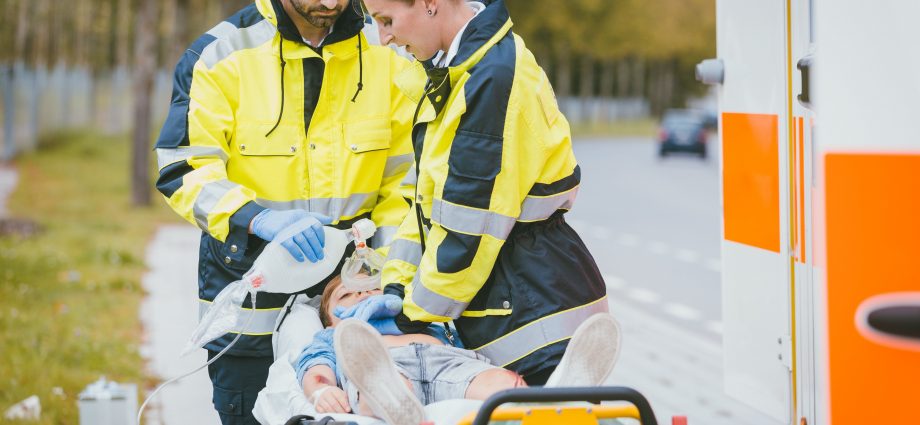MONDAY, July 10, 2023 (HealthDay News) — Less than half of all children treated by emergency medical services receive the right amount of medication during out-of-hospital emergencies, a new study found.
In some cases, these incorrect doses can have serious consequences.
“If you don’t give the appropriate dose of the anti-seizure medication for a patient with an ongoing seizure, the seizure will not stop,” said study co-author Dr. Sriram Ramgopal, an attending physician in emergency medicine at Ann & Robert H. Lurie Children’s Hospital of Chicago.
“The longer a patient is seizing, the higher risk they are of having complications from that seizure,” he said. They might aspirate into their lungs and get pneumonia from that, or they might have respiratory depression. And of course, if a child is having a seizure and you give too much of a medication, since they’re also sedatives, they can suppress the child’s breathing.”
Specifically, the study — published July 10 in the journal Pediatrics — found that in the nearly 1 million pediatric encounters examined, just 42.6% administrations of 10 commonly used medications followed national guidelines.
Seizure and sedating medications like morphine were among some of those most often given in incorrect amounts — with most deviations representing an underdose. Those with the lowest adherence to guidelines were diazepam (19.4%) and lorazepam (21.2%).
Appropriate dosing was most common with the anti-inflammatory methylprednisone (75.1%); intramuscular epinephrine (67.9%), which is often given to treat anaphylaxis; and the pain reliever ketorolac (56.4%).
Dr. Jennifer Anders is a pediatric emergency medicine specialist at Johns Hopkins Children’s Center in Baltimore. While she was aware that incorrect dosing outside the hospital was a problem, she didn’t realize just how grave the situation was until she read the study.
“What I found really stunning about this work that they did was … just how pervasive and extensive the problem is,” Anders said. “Even knowing that this was a problem, it really knocked my socks off.”
Researcher Ramgopal stressed that blame for these inaccuracies should not be put on EMS workers themselves.
“I think when we wrote the paper, we were very clear that while we think dosing errors are a part of it, I don’t think that’s all of it,” he said. “The paramedics who are doing this have a complex job in front of them. Rather than assigning blame to anybody, I think the important thing is: What can we do to improve systems, to minimize the risk of errors?”
For children, most medications are dosed out based on weight. While there are techniques for doing so, guessing someone’s weight with relative accuracy can be difficult. Plus, when EMS workers face the stress of treating a child in crisis all while riding in the back of a truck, doing math to determine how much medication is needed can prove quite challenging.
“It is not uncommon to have people do an error by 10 times the dose if they’ve misplaced a decimal point when they’re doing that math,” Anders said.
To make matters more complicated, there is no national standard among paramedics for pediatric drug doses.
“The protocols that EMS is following vary from region to region, so those protocols might call for different doses of medications,” Ramgopal said.
He said more centralized EMS practices could help close the gap on incorrect dosing.
Several states rely guidelines put forth by the National Association of State EMS Officials, but many have their own guidelines, or, in some places, no official practices at all. The EMS for Children Program is also working to give all U.S. emergency departments the necessary resources and guidelines to care for children.
Ramgopal also mentioned a 2015 study in which paramedics were given color-coded, prefilled syringes as a possible way to reduce dosing errors. The strategy was found to be significantly effective.
Anders noted that another study is now in the works. The Pediatric Emergency Care Applied Research Network is testing administration of seizure medication with only three size options for children instead of measuring out medication based on exact weight. She suspects such a method will soon be common practice.
“What a lot of us that are very active in pediatric prehospital medicine, I think, foresee on the horizon is a move to less stringent standards for an exact weight-based dose and more kind of an estimated small, medium, large kind of dosing regimen to make things much simpler and take the math out of the work for EMS clinicians,” Anders said.
More information
For more on pediatric emergency medical service guidelines, visit Emergency Medical Services for Children.
SOURCES: Sriram Ramgopal, MD, attending physician, emergency medicine, Ann & Robert H. Lurie Children’s Hospital of Chicago, and professor, pediatrics, Northwestern University Feinberg School of Medicine, Chicago; Jennifer Anders, MD, pediatric emergency medicine specialist, Johns Hopkins Children’s Center, Baltimore; Pediatrics, July 10, 2023
Copyright © 2025 HealthDay. All rights reserved.

